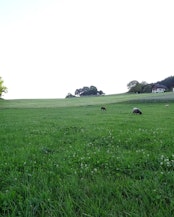Making the value of soil visible

Making the value of soil visible
Our Objective
To develop an innovative, time-saving method for mapping soil properties, thus creating a solid foundation for decision-making in various fields.
Figures
The project was launched on August 1, 2020 and has been concluded.
Summary
Soil provides a variety of important services, including nutrient and water storage, carbon sequestration, erosion control, a habitat for organisms, water purification, and resource provision. Access to standardized, high-resolution, and reproducible soil data is essential for agriculture and forestry, spatial planning, climate adaptation, and groundwater protection. It is also key for the physical, chemical, and biological protection of soil, as well as for biodiversity conservation. Until now, however, such data were lacking for Switzerland as a whole, including the Canton of Bern. Our project addressed this gap by providing comprehensive soil data for the Canton of Bern.
In collaboration with: Office for Agriculture and Nature of the Canton of Bern (LANAT)
Project Connections
Timeline
Making the value of soil visible: deep dive
Project Update February 17, 2025
The project seeked to answer the following questions: What innovative approach can we use to collect key data supporting the sustainable use of soil as a resource in sufficiently high quality but at more frequent intervals than before? How can we optimize the interaction of the different technologies, work steps, and stakeholders in a highly complex and large-scale project? How, and by means of what products, can we best put the documented soil properties to use as services that the soil provides for climate protection, biodiversity, spatial planning, and sustainable agriculture? The data will soon be made available on the geoportal of the Canton of Bern. In a subsequent step, the findings will be put into practice.The project is being carried out by the School of Agricultural, Forest and Food Sciences (HAFL) at Bern University of Applied Sciences, in close cooperation with the Swiss Soil Competence Center (KOBO).
Team
- Project contact
Project contact
Cyrill Hess
Research Scientist

